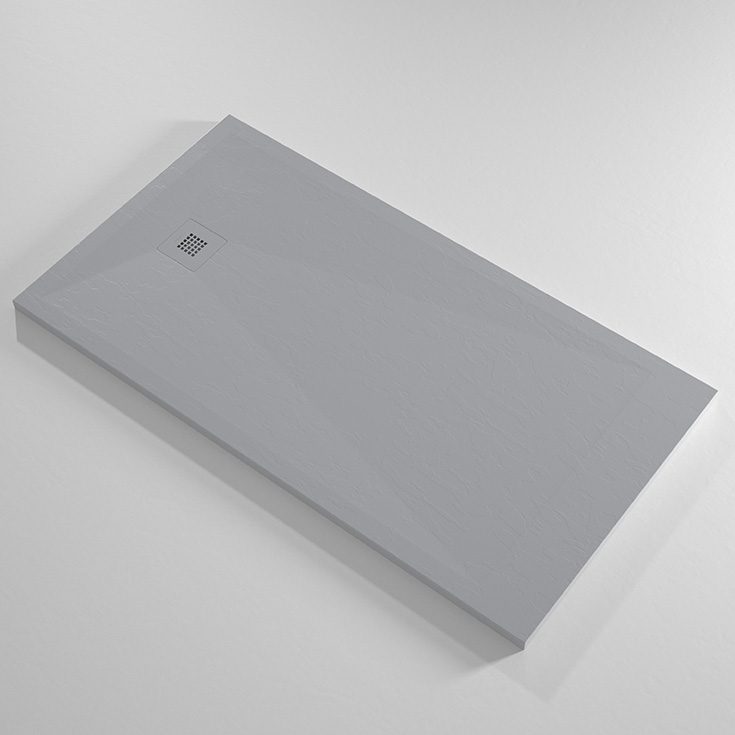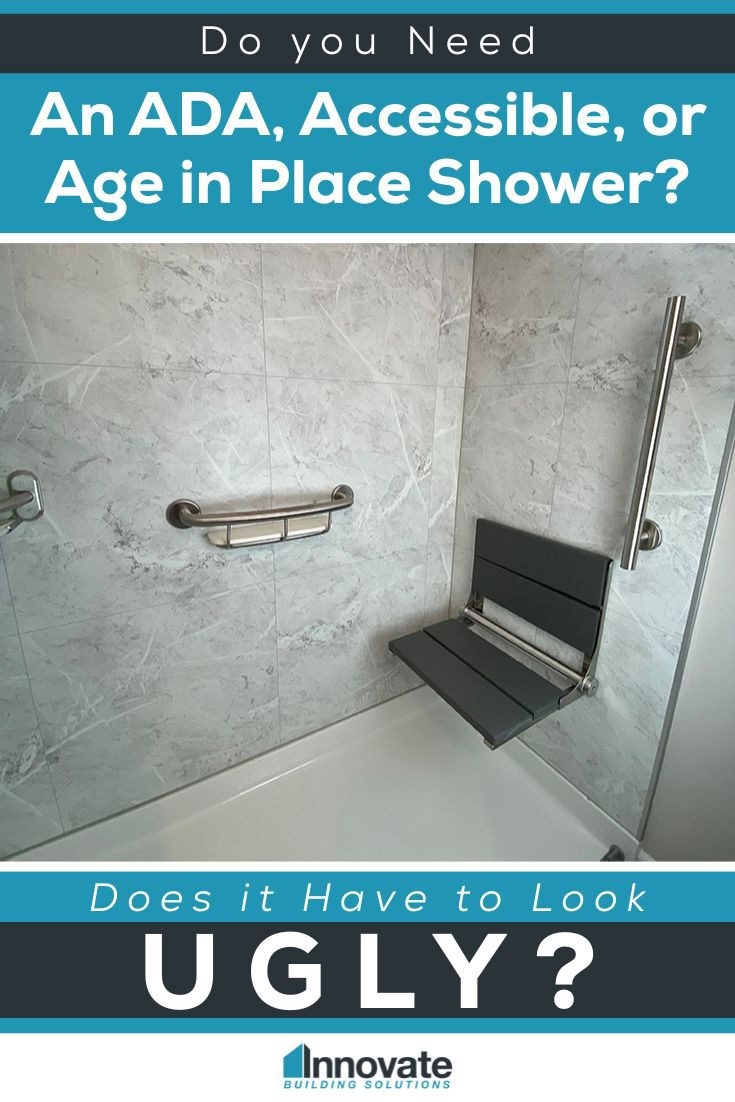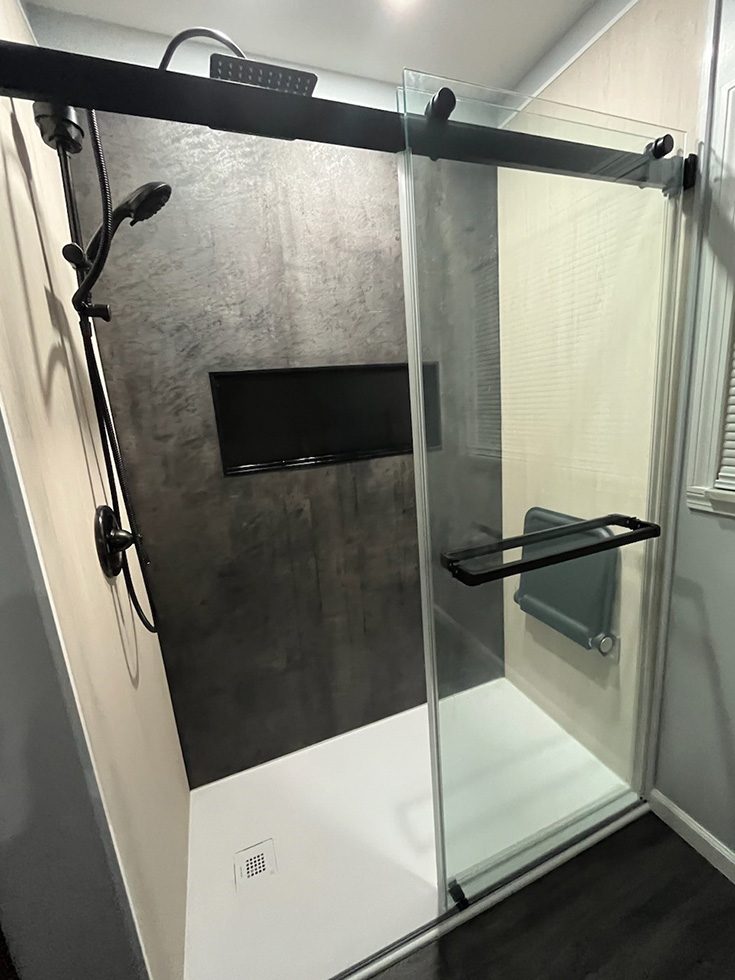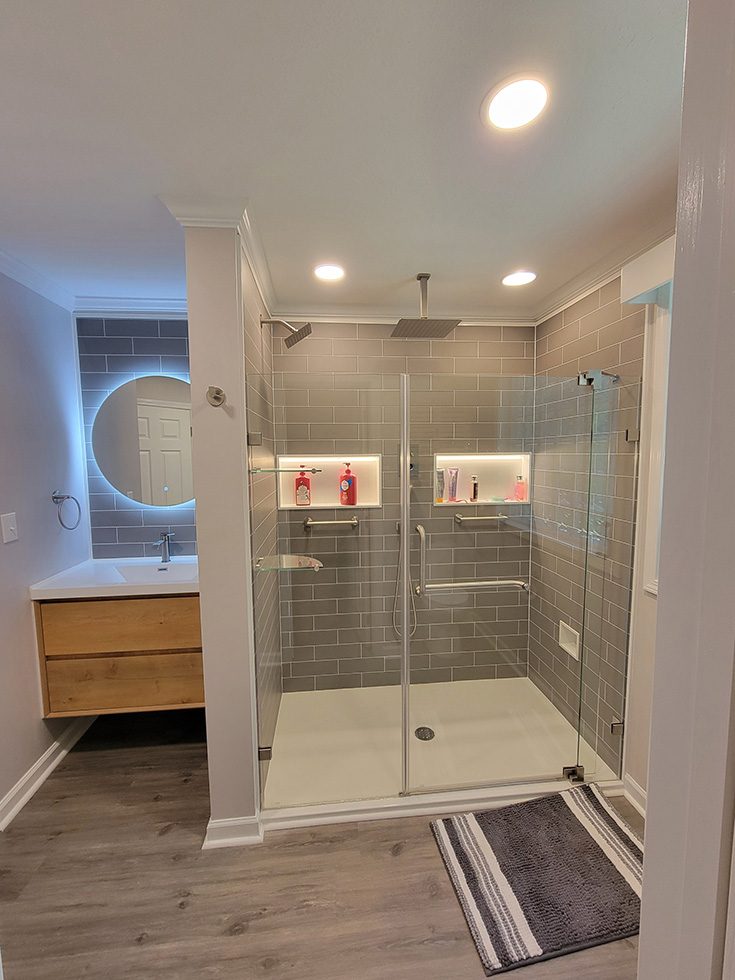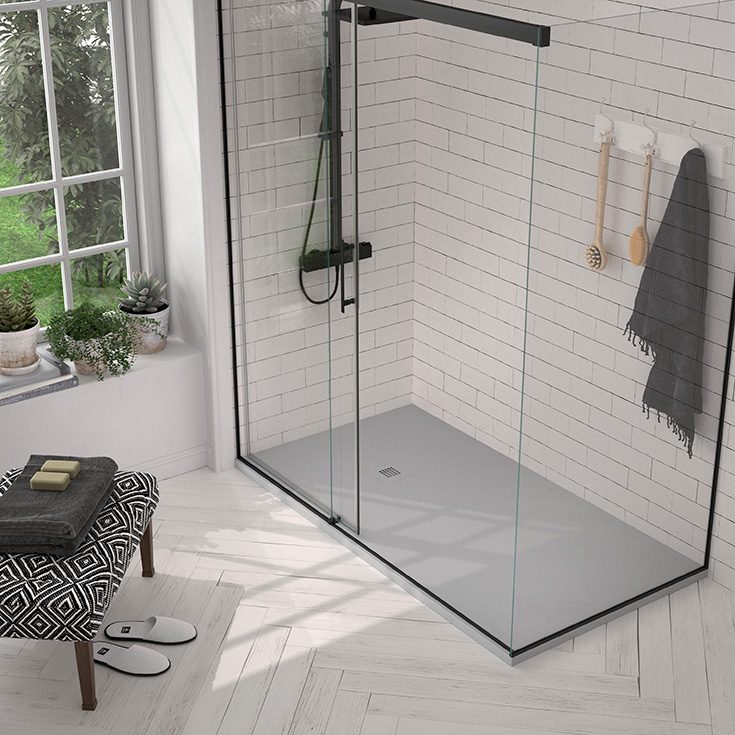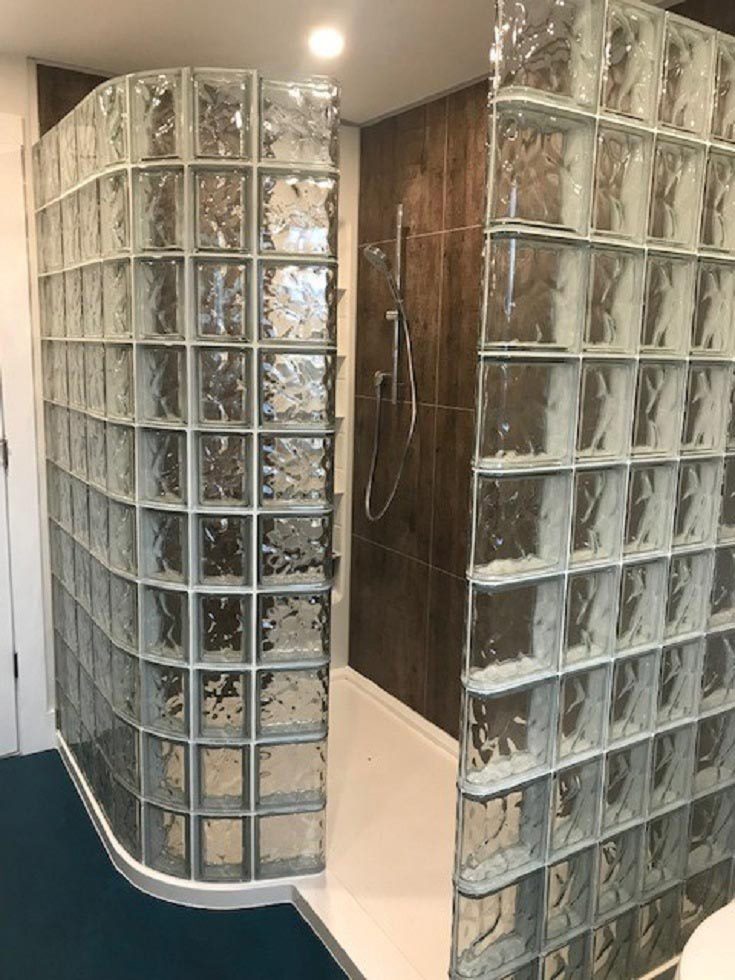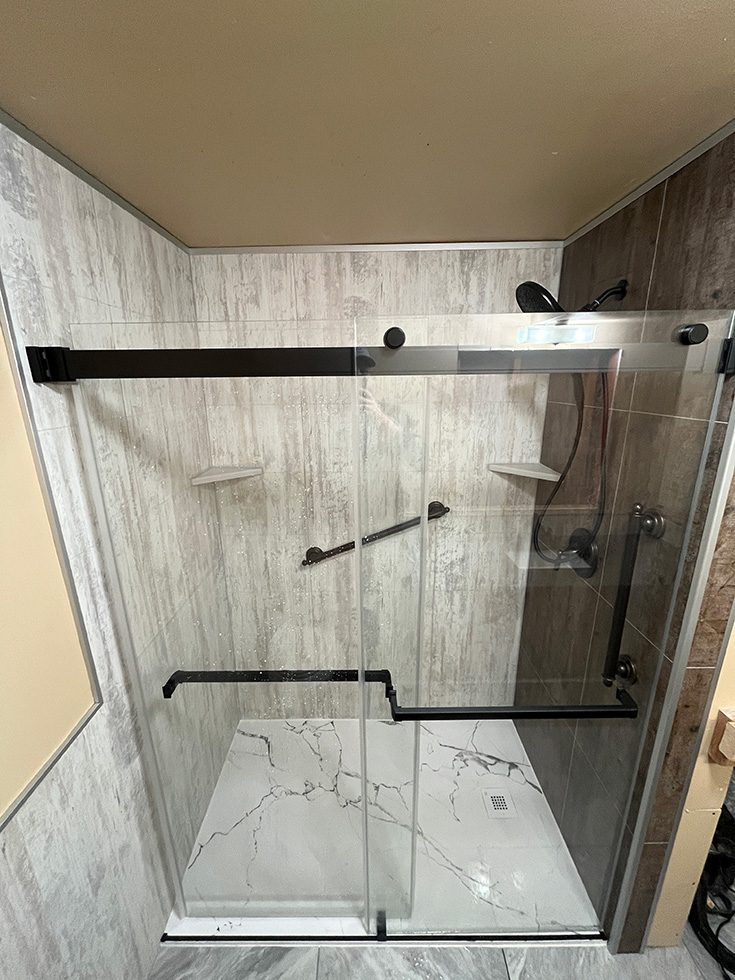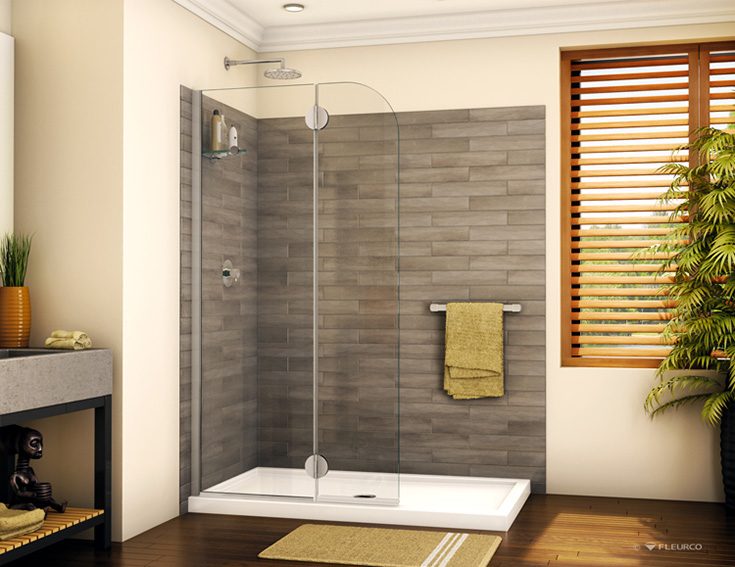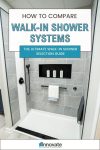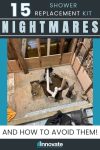15 Frequently Asked Questions about Shower Pans (with No BS Input from an Industry Vet)
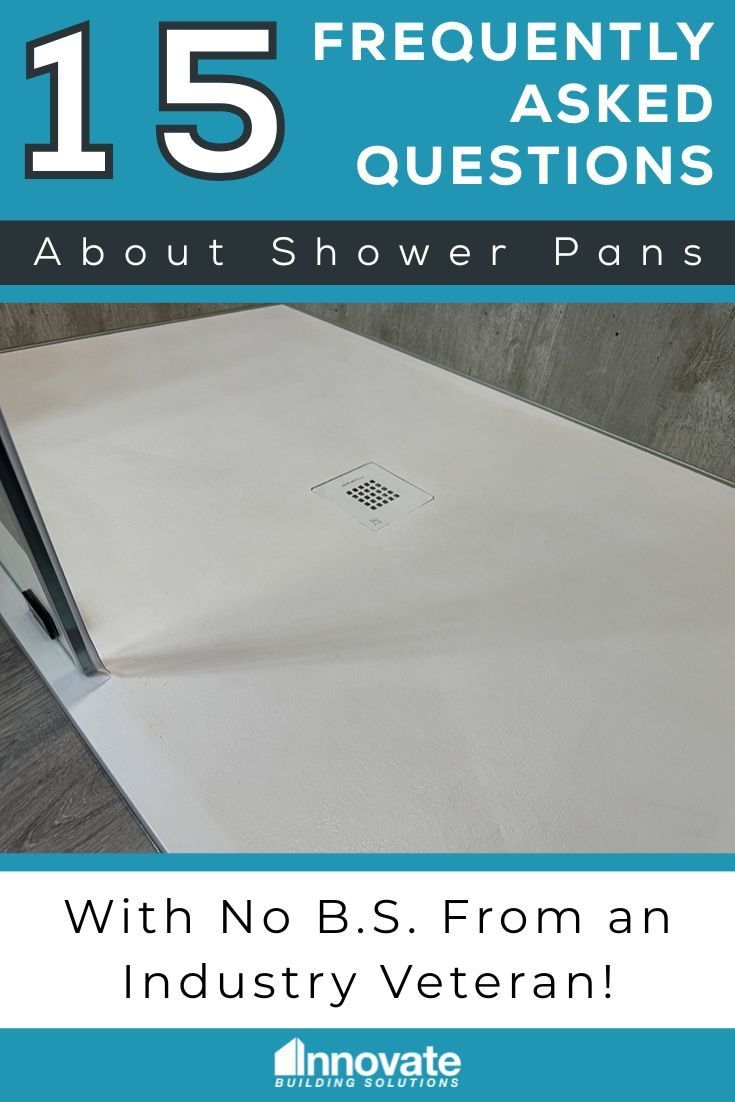
Let’s face it – talking about shower bases IS NOT sexy. The only thing worse than discussing shower bases, is talking about shower drains or getting a root canal.
However, while shower pans aren’t the focal point of most bathrooms, if you buy the wrong base, it leaks, or it ends up becoming a problem for a member of your family because of an accident, injury, or mobility challenge it could cause your entire shower investment to go down the drain. Bad analogy yes, but true.
So, the question is what do you need to know about shower pans to make a smart selection? And what things will self-serving contractors or manufacturers NOT tell you?
Read the 15 frequently asked questions below and get input from a ‘grizzled industry vet’ (and that’d be me). And yes I’m 65 years old – but if I go dyslexic on you, I’ll claim I’m only 56!. I’ve been in the bathroom business since 1985 (and that does make me feel OLD). And, quite frankly, I’ve seen the good, the bad, and the ugly in shower pans over the years. So, let’s dig in.
FAQ #1 about shower pans– What are the biggest mistakes to avoid buying a shower pan?
One reason to put off a shower remodel is FOSU. And FOSU is the Fear Of Screwing Up. And although a shower base isn’t the most fun element of a bathroom remodel it is (literally) foundational to it holding up over the years.
So, you may be asking – what are the biggest things I DO NOT want to mess up in buying a shower pan? Here’s five to consider (and yes, there will be answers to these 5 mistakes in the FAQ’s below):
- Mistake #1 – Buying the wrong size shower pan (read FAQ 3)
- Mistake #2 – The pan has the wrong drain location (read FAQ 3)
- Mistake #3 – The shower curb is too low or too high (read FAQ 4)
- Mistake #4 – The shower pan is hard to clean (read FAQ 7)
- Mistake #5 – The shower base flexes like Gumby (read FAQ 6)
FAQ #2 about shower pans– How much does a shower pan cost?
Well, I’ll tell you first if you’re buying a shower which will be quoted and installed by a professional contractor, you’ll be hard-pressed to get an itemized cost of the shower pan because it’ll be included in the overall bid.
And many contractors (quite frankly) don’t like to do ‘line-item’ pricing because it leads to customers wanting to ‘cherry-pick’ the items they’d like to buy (and save a few bucks)– then have the contractor install. And as contractors know, the cheapest products often are the hardest to install because they’re not made well. In addition, your contractor may tell you to ‘hit the bricks’ if you want them to warrant a product you purchase.
However, this doesn’t mean you still don’t want to know what a shower pan costs. This is certainly true if you’re DIYing the job or buying materials and your contractor has agreed to charge you for labor only (note: most contractors won’t do this, but smaller bath remodelers and handyman might).
So, here’s rough material cost ranges for a standard sized 60” x 32” shower pan used for a tub to shower conversion with different shower pan material selections .
- For a fiberglass pan expect to pay from $200 to $400.
- For an acrylic pan you’ll pay from $300 to $1,200 depending on the type of drain (note: linear drain models are more expensive), how sturdy the pan is, and how modern it’s design is.
- For a solid surface pan expect to pay from $500 to $1,500 depending on the color, design, or drain style.
- A ready for tile shower pan (without the tile) can be from $400 to $800. However, remember you need to add the cost of the tile (and installation labor if you’re not DIYing it).
And while it can be tempting to choose a cheap pan since it’s not the sexiest part of the project, it can be a major mistake. If the pan cracks, or is hard to clean, or squeaks, it’ll be something you have live with until you remodel again (unless it fails before then). So – my recommendation is (as my dad used to tell me), ‘Don’t be penny-wise and pound foolish.’ Do not pick the cheapest pan you can find. It’ll bite you in the butt more often than not.
FAQ #3 about shower pans– How can I make sure I buy the right sized shower pan and the drain won’t be in the wrong location causing higher shower pan installation costs?
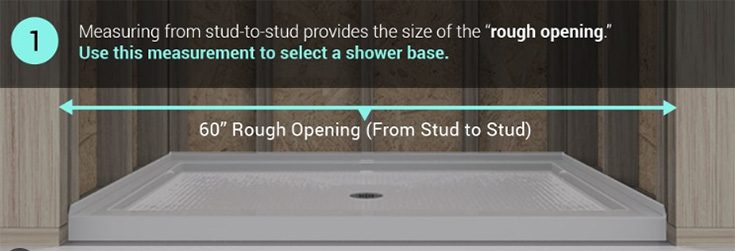
Since shower pans are installed inside the ‘rough opening’ (meaning between the studs) it’s best to measure after the old pan is out (because if you measure inside your tile or drywall the measurement will be too small – assuming you want to replace the old pan with a pan of the same size).
However, you may be asking if it’s not practical to remove the old pan before ordering (because you REALLY don’t want to shower at your gym or (worse yet) at your mother-in-law’s house while the renovation is happening since you don’t have another shower) you’ll need to estimate the thickness of the materials on the sides (and/or remove the materials in the upper corners) to estimate the ‘rough opening’ (AKA the stud to stud measurements).
Also – it’s CRITICAL to measure to the center of the drain (if you’d like to keep the same drain location), because if you’re increasing the size of your shower (let’s say from a 32” x 32” stand up shower to a 60” x 32” walk in shower) – usually the existing drain location will need to be moved to work with a new pan if it’s a standard size.
FAQ #4 about shower pans– I want a shower pan for aging in place (not because I’m aging, mind you, but because ‘my friend’ or spouse is!). What pan is best for this? Should I look for an ADA shower pan? And when does it make sense to have a tall curb for a shower pan?
If you’re looking for a shower pan for aging in place ‘for a friend (or your spouse)’ because you’re convinced you can’t be aging, I get it! I like to joke about being a dyslexic ’56 year old’ (a convenient way to shave off 9 years from my ‘ripped’ -exaggerating can be fun- 65 year old body).
However, we all know Father Time is undefeated! And even Botox will eventually lose to this guy.
So, how can you make your shower works as you age and ‘ward off’ needing to move to an expensive assisted living facility? Here’s 3 ideas:
- To limit the chance of falls, remove your tub (or high threshold shower). Replace it with a lower profile (which is anywhere from 1” to 3” tall) shower pan.
- Look for a pan which has good slip resistance.
- See if you can get a ‘ramp kit’ for your shower pan so if you need to convert to a wheelchair accessible shower pan at a later date it’ll be possible.
Many homeowners ask if they need an ‘ADA shower pan.’ The simple answer is no. ADA stands for the Americans with Disability Act, and ADA rules only apply to commercial facilities. You can use ADA as a ‘guideline’ for a safer shower, but it’s not required for a home renovation.
If you want to learn more read Do You Need An ADA, Accessible, Or Age in Place Shower, and Does it Have to Look Ugly?
And finally while tall, curbed shower pans (with 4” to 5” thresholds) generally don’t make sense for aging in place, they can be smart for a stand up shower to provide more area inside the pan when the drain clogs so water doesn’t run over the top.
FAQ #5 about shower pans– Can I use any type of wall surround with any shower pan? Do they need to be from the same manufacturer? Should the shower pan – or wall surrounds – be installed first?
If any contractor tells you have to use their wall surrounds with their shower pans – that’s a pile of DUNG!
Shower pans are ‘shower wall surround’ agnostic. For example, you could pair a solid stone shower pan with laminate wall panels. Or you could use an acrylic shower pan with tile walls.
The only key with whatever combo you’re using is to install the shower pan first (inside the rough framing). Then make sure the wall surrounds are inside the flange of the shower pan for proper waterproofing (see the detail drawing below).

To learn more how to choose the right shower pan with wall surrounds watch the video below.
FAQ #6 about shower pans– Which types of shower pans are most durable? Which are least durable?
The most durable shower pans are made from solid surface or cultured stone. As a matter of fact, at trade shows I like to stand on the edge of the curb of a cultured granite shower pan – with all my weight – and show how it’ll support me and not flex. And I’m going to admit I’m no longer ‘weighing in’ at the 155 lbs. I did as a high school senior.
The least durable pans are ‘plastic pans’ made of fiberglass and acrylic. Although there are reinforced acrylic shower pans and extruded polystyrene fiberglass pans which are durable. So, it’s a ‘caveat emptor’ (Greek for ‘let the buyer beware’) decision if you buy a plastic pan. And as the cheesy commercials say…..
Don’t be fooled by cheap imitations.
FAQ #7 about shower pans– Since you may be the unpaid ‘maid’ in your home, you may be wondering which shower pans ARE hard to clean, and which ones are not?
If you’re ‘elected’ to clean your shower, DO NOT get a tile shower pan. Grout joints are evil. Or if you choose a tile pan use larger format tiles and epoxy or urethane grout between the joints to make cleaning simpler.
Also, be aware fiberglass pans can stain and yellow and become IM-POSS-IBLE to clean.
The better – and simpler choice for ease of maintenance are engineered stone shower pans or acrylic shower pans. They’re non-porous and have no grout lines.
FAQ #8 about shower pans– I’ve been told I need a custom shower pan, and the word ‘custom’ sends shivers down my spine. Is there any ways I can minimize the costs if the shower pan I need isn’t a ‘standard’ size?
The ‘Switzerland’ answer to this question is yes and no.
In some cases, you can take a ‘trimmable shower pan’ and cut it to make a custom size from a standard pan.
Another option (if your shower drain is in an odd location and caused the need for a custom pan) is to move the drain. Although sometimes moving the drain with a professional plumber adds more cost than buying a custom shower pan.
And lastly is you still need a custom pan I recommend you compare the cost between a premade custom pan and a site-built custom pan. I – for one –prefer the premade shower pans because they’re factory waterproofed vs. relying on the waterproofing skills of a field tech who is making the pan on site. And as we all know some techs are more skilled than others.
FAQ #9 about shower pans– What are standard shower pan sizes? And can I take a custom size rough opening and save money by using a standard pan in it?
This is a loaded question since there’s different types of shower pans – and shower pan sizes within those types.
For example, common types of shower pans and sizes include:
- 3 sided alcove shower pans. These are pans where there’s 3 interior walls. The most common alcove shower pans are used in a bathtub to shower conversion or for small stand up showers. Common tub to shower conversion sizes, or larger shower to shower conversions include (but aren’t limited to) 48” x 36”, 60” x 30”, 60” x 32”, 60” x 36,” 60” x 42,” 60” x 48,” and 72” x 36”. Common sizes for stand up showers are 32” x 32” or 36” x 36”.
- 2 sided corner showers. You’ll see NEO angle, rounded or square corner shower shapes. Common sizes are 32” x 32”, 36” x 36”, and 42” x 42”.
And if you have a custom-sized opening but want to use a standard pan to keep costs down, the best way to accomplish this is to reframe the opening and/or to remove existing walls (which can get expensive).
FAQ #10 about shower pans– How long does it take to get a standard or custom shower pan?
Standard shower pans are available from stock. Local home centers will stock common sizes – but beware they sell the REALLY CHEAP ONES. Specialty shower products suppliers can ship you a higher quality shower pan in standard sizes you’ll get in a week or two.
For custom shower pans lead times will be 2 to 8 weeks. Plan accordingly because you need to install the shower pan before you do the rest of the shower. It’s the ‘foundation’ of the job.
FAQ #11 about shower pans– What decorative options are available in shower pans?
Contrary to popular belief – not all shower pans are white and boring.
For example, if you want a low maintenance solid surface shower pan what do you think of this one with a classic white marble design and ‘disappearing’ drain cover?
Or if you want a ‘massaging’ shower pan for your feet, use a tile shower base with pebbled stones.
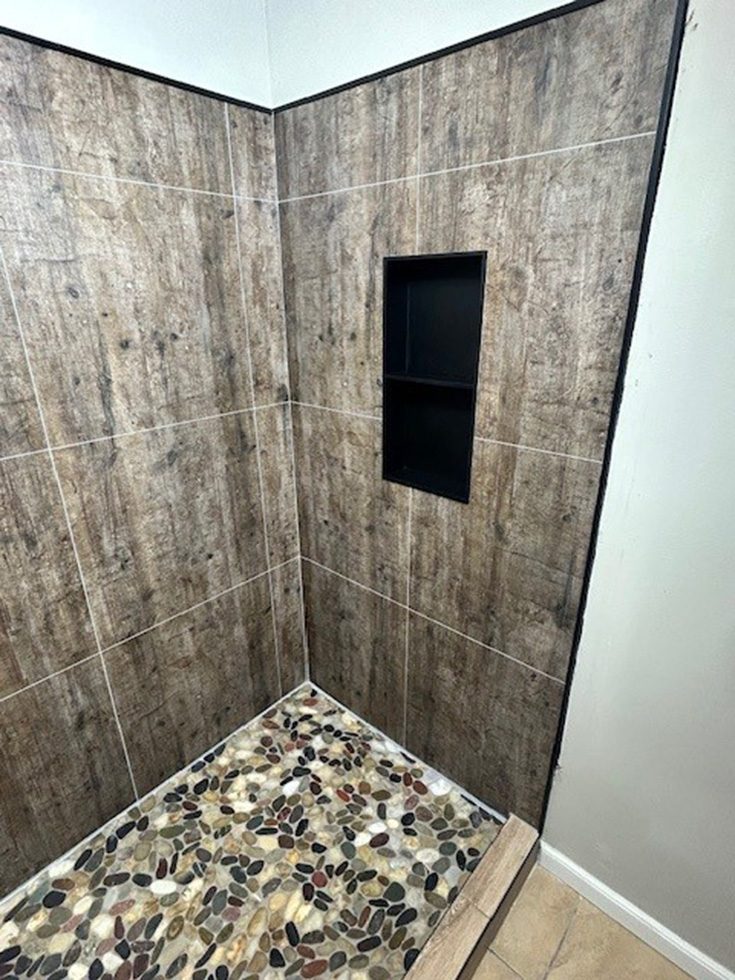
If you want an artistic one-of-a-kind shower base, the artistry achievable with tile shower pans is endless. Ok, that’s ASSUMING you can find a highly skilled tile setter and they WON’T charge you an arm and a leg!
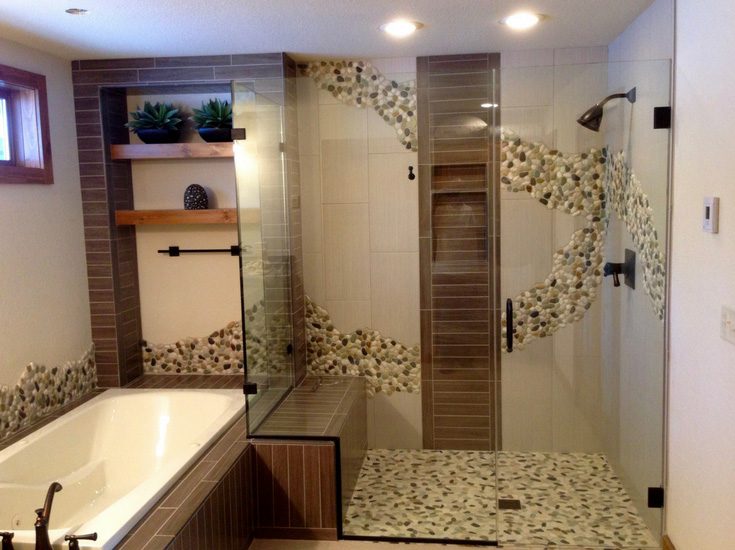
And you can even create a shower pan with a linear drain for a clean, contemporary look.
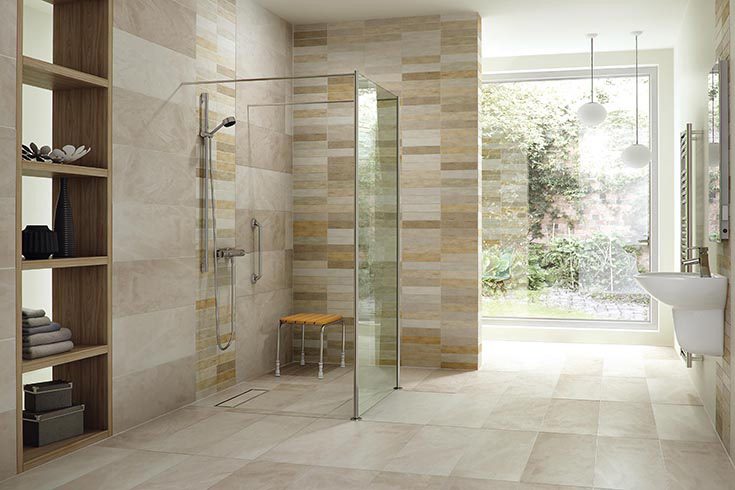
FAQ #12 about shower pans– Should I buy a shower pan with an integral seat?
No, no, no. I implore you (fancy word I threw in to make you think I’m smart, I hope it’s working) don’t do it!

Shower bases with seats are not only expensive but most importantly they eat up a ton of room, the seats aren’t designed specifically for the height or depth (a P.C. word for butt size) of those using them in your family. In addition, most of the pan materials they’re available in are UG-LY!
I’d recommend buying a fold down shower seat. Only use a fixed bench seat if you have a huge shower or require a larger transfer bench.
FAQ #13 about shower pans– What’s the warranty of shower pans?
Warranties can be all over the board – depending on the manufacturer or the installer (if you’re getting a site built tile shower pan). And usually cheaper shower pans (as you’d expect) have shorter warranties (one to two years is common). Better pans have 10 year warranties.
And if you’re getting a site built custom tile shower pan don’t assume it has any warranty because many contractors offer no (yes, that’d be zilch, zero, nada) warranties on their work (which is a Ripley’s Believe it Or Not situation if you ask me). However, if you hire an experienced tile contractor who uses a higher quality shower waterproofing system (like Wedi or Schluter) you’ll find warranties up to 5 years for a tile shower pan.
FAQ #14 about shower pans– What can I do to save on the installation cost of a shower pan?
The best ways to save on shower pan installation costs is to do the following:
- Buy a premade shower pan. Site built pans take far longer to install.
- Don’t do a tile shower pan. Tile is labor intensive.
- Insist on a detailed drawing of the pan with the drain location so you can make sure the drain is in the right location.
FAQ #15 about shower pans– Who can I call for advice about shower pans, get wholesale pricing, or find a contractor who won’t screw up my job?
Ok – I’m gonna come clean here (yes, that bad shower pun WAS intended) and say I think you should call the company I lead, Innovate Building Solutions. We wholesale multiple shower base product lines (including solid surface, cultured granite, and contemporary reinforced acrylic pans) and have Shower Specialists who really know their stuff (and most aren’t as wacky as I am!).
Call 877-668-5888. They’ll give you advice and wholesale pricing.
If you need a contractor ask our team to look at our local installing dealer list for a referral for you. And if you’re in Cleveland or Akron Ohio call 216-531-6085.
Thanks for reading and putting up with me!
Mike
